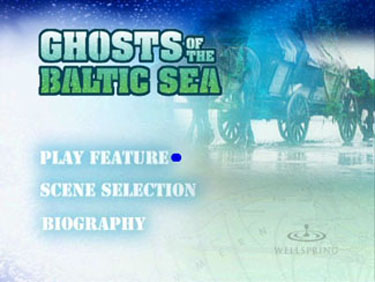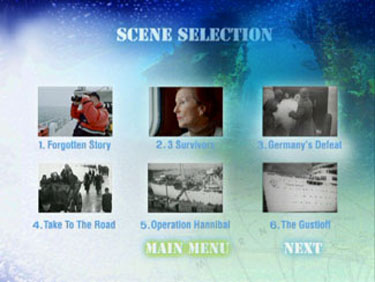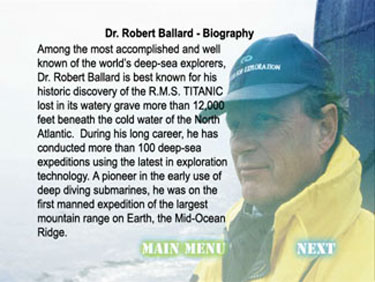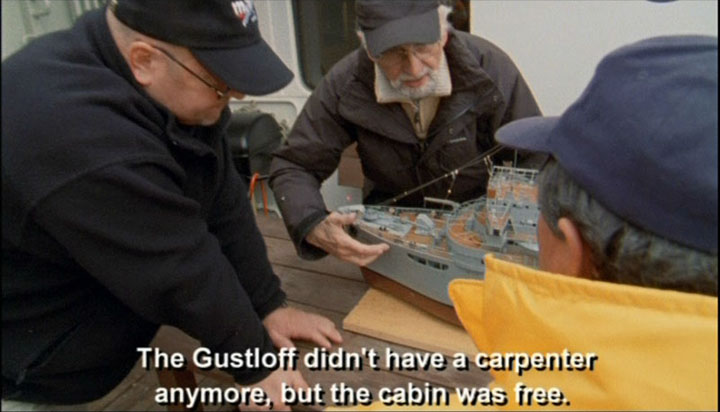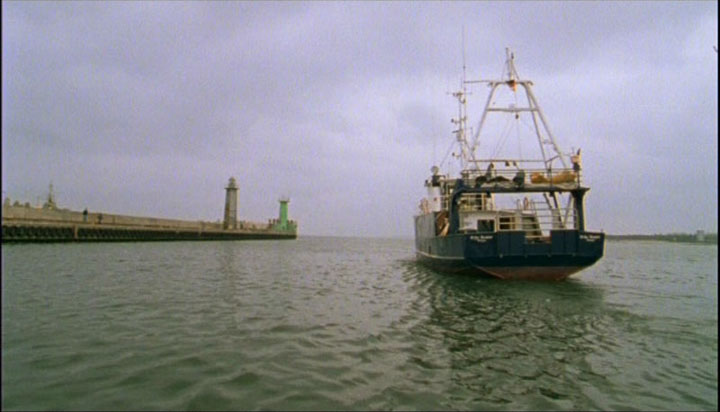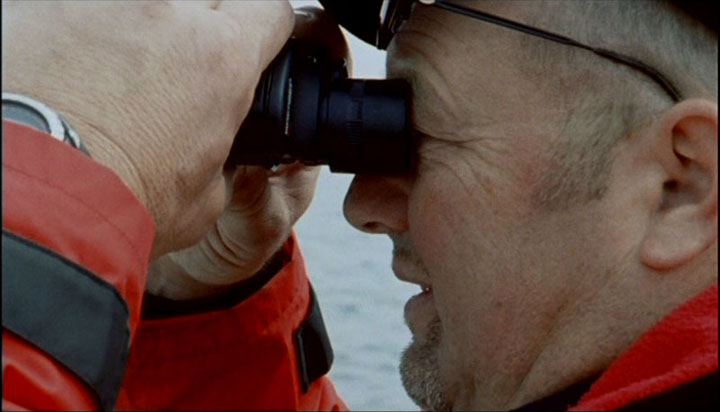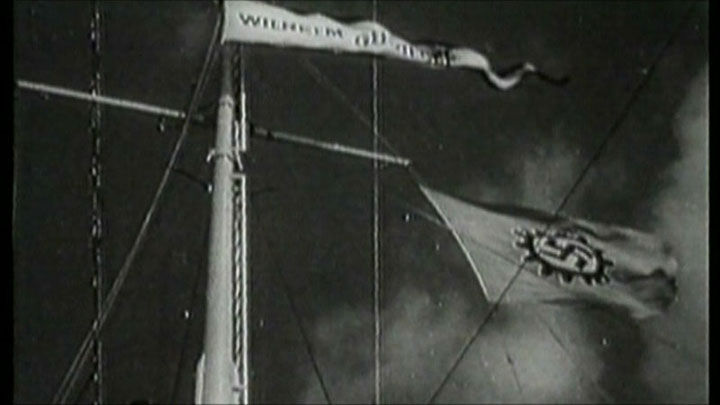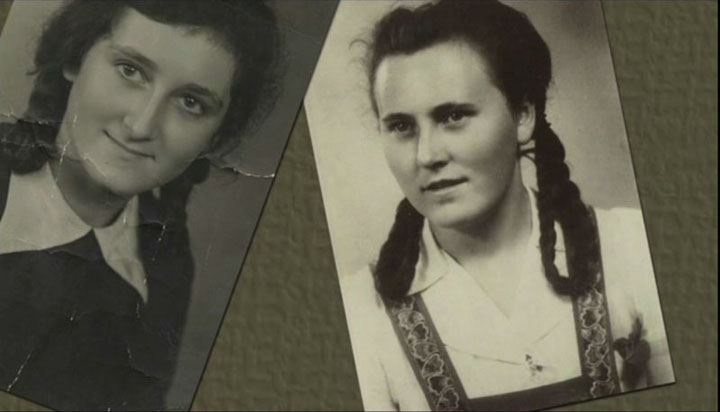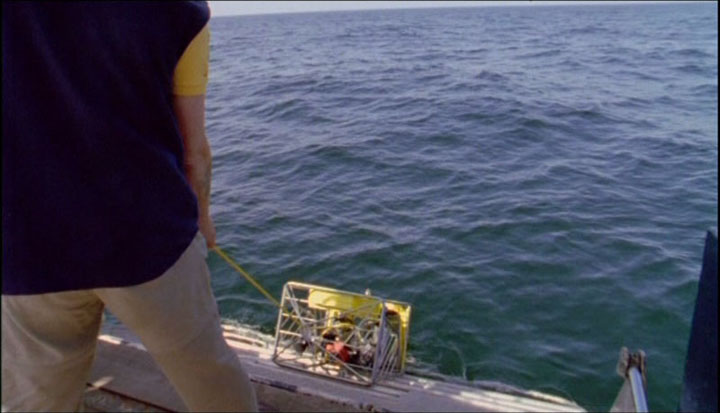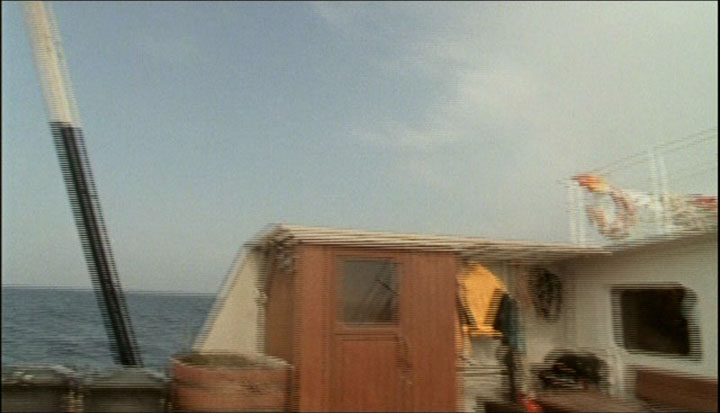![]()
![]()

![]()
![]()

directed by Jon Goodman
USA 2005
After the success of James Cameron’s epic
blockbuster “Titanic” (1997), lost treasures and oceanic tragedies
seem to go hand-in-hand when it comes to the subject of films. Although
Cameron’s movie is more likely remembered as a disaster flick than a search
for concealed history (as indicated in the opening sequence), there is a
resonant aura of nostalgia when the old woman reminisces about her past and
the infamous red-jeweled necklace. Unfortunately, it’s just that a large,
powerful machine sinking to the seemingly endless depths of an ocean is
certain to appeal to a wider range of audiences and given Cameron’s
background in special effects (“Terminator 2,” 1991), the potential
spectacle of a 46,000-ton ship hitting an iceberg was probably a more
enticing thought than any buried treasure could ever be. But, just to be on
the safe side, Cameron wisely added a few scenes with the old woman and the
necklace to fuel the melodrama. Judging by the considerable box office
return, audiences were enraptured by Cameron’s cinematic achievement and the
film has since become a romantic classic.
“Ghosts of the Baltic Sea” (2005), a documentary from director Jon
Goodman, concerns the disastrous Soviet assaults on German evacuation ships
at the end of WWII with a focus on both of the themes Cameron explored in “Titanic.”
But, rather than discovering a lost necklace and an old woman’s stylized
retelling of history, Goodman reawakens a much more rewarding treasure--the
forlorn memories of those who survived the little known catastrophe. It’s
Goodman’s theory that he might provide closure to these men and women who
still live with the pain and loss that stems from such an unfortunate event.
His approach mirrors the opening sequence of Cameron’s film in that he’s
found survivors who are willing to relive their memories of tragedy. But,
the emotionally potent retelling that follows when one survivor utters her
grief over the loss of a close friend is infinitely above-and-beyond what
Cameron achieved in “Titanic.” It’s an extremely emotional scene and a
moment that’s profoundly personal. The memories these survivors live with
are drenched in sorrow and expressed with finality. Their stories are the
driving force at the heart of this documentary.
Dr. Robert Ballard, an explorer with an impressive resume of deep-sea
excursions, leads this expedition and narrates the documentary. Ballard’s
past documented experiences might indicate that this documentary is largely
situated underwater. But interestingly enough, director Goodman is more
concerned with history. There are definitely enough scenes to satisfy
Ballard’s following of underwater enthusiasts, but in this case, audiences
are offered much more in the line of emotion and discovery rather than
excitement. According to the film, a German naval commander named Karl
Dönitz planned on transporting the estimated 20,000 refugees from Prussia
back to Germany upon announcement of imminent soviet assaults. The means of
transport were three ships: Goya, Steuben, and Wilhelm Gustloff; all of
which were sunk by Russian torpedoes. If one is to consider the background
to WWII, one might realize why many have disregarded the 20,000 lives that
were lost. Since the victims (largely civilian Germans) were perceived as
the enemy during WWII, it was probably easier for society to neglect the
loss. In retrospect, the death toll is a disturbing statistic and one that
easily surpasses that of the Titanic, an event in history that is the
subject of far more reports and documents.
Where “Ghosts of the Baltic Sea” lacks the visual grandeur, expansive sets,
and cinematic style of its more expensive predecessor, the documentary
compensates in passion and exposure. The insight Ballard offers into this
tragedy is clearly a source of interest for a man who has investigated many
other more famous maritime disasters. Ballard believes the reason this
catastrophe is overlooked is that it fails to capitalize on the beloved
“romantic” quality of other disasters like the sinking of Titanic. Ballard
makes an interesting and alternately disturbing realization here. In recent
times, it appears that history must be documented in theatres before society
will take notice--a thought that acknowledges the immediacy of more recent
tragedies in Rwanda (“Hotel Rwanda,” 2004 and “Shooting Dogs,”
2006) and Bosnia (“Welcome to Sarajevo,” 1997) that were given film
translations before the majority of society was aware of what had happened.
Reviews More Reviews DVD Reviews
DVD Review: Wellspring - Region 1 - NTSC
Big thanks to Kurtis Beard for the Review!
| DVD Box Cover |
|
CLICK to order from: |
| Distribution |
Wellspring Region 1 - NTSC |
|
| Runtime | 50:02 | |
| Video |
1.75:1 Original Aspect Ratio |
|
|
NOTE: The Vertical axis represents the bits transferred per second. The Horizontal is the time in minutes. |
||
| Bitrate |
|
|
| Audio | Dolby 2.0 Surround (English) | |
| Subtitles | Occasionally Forced English | |
| Features |
Release Information: Studio: Wellspring Aspect Ratio:
Edition Details:
Chapters 12 |
|
| Comments |
Video: The big disappointment with this DVD is that the video transfer is presented in a 1.75:1 non-anamorphic transfer. Colors are consistently muted and softer than one would hope for. Contrast is appropriate, but clearly shooting footage with the unpredictable conditions of the rugged open sea took a toll on image quality. However, these are minor complaints and the transfer is certainly average. There is an abundant amount of archival footage that is expectedly grainy and significantly damaged with scratches and blemishes. Audio: The audio is presented in the form of an English Dolby Surround 2.0 track. Seeing as how this is a dialogue-driven film, audio channels are rarely tested. There is some good activity during WWII footage and onboard the boat (the crashing of waves). This is by no means a great track, but one that’s sufficient for this film. Extras: There’s another disappointment here with a lack of any substantial extras. I’d settle for more insight from Ballard or even a brief interview with the director, but alas, all that’s provided is a series of biographical text on Ballard. |
DVD Menus
|
|
|
|
|
Screen Captures
Subtitle (Forced)
|
|
|
|
|
|
|
|
|
|
|
|
Combing
|
|


